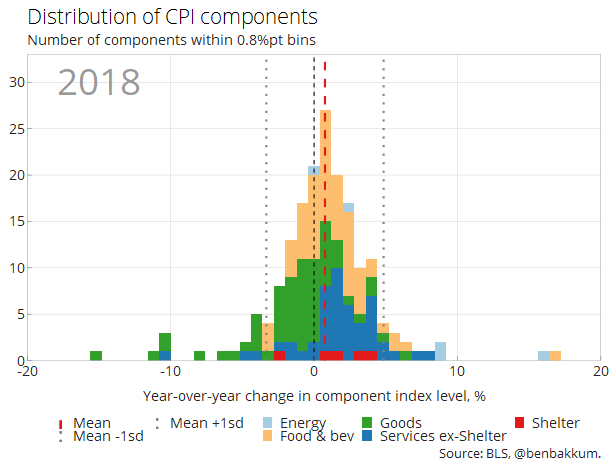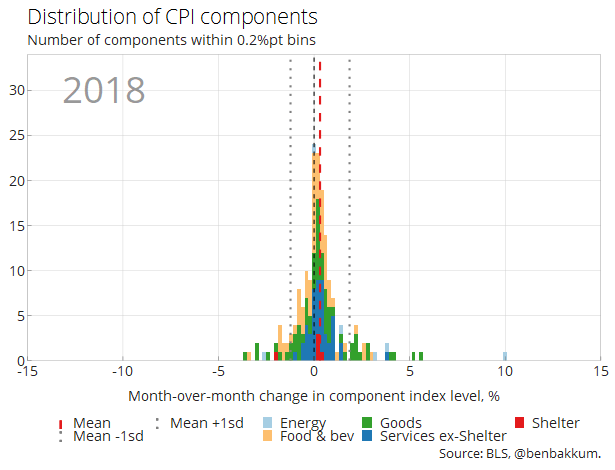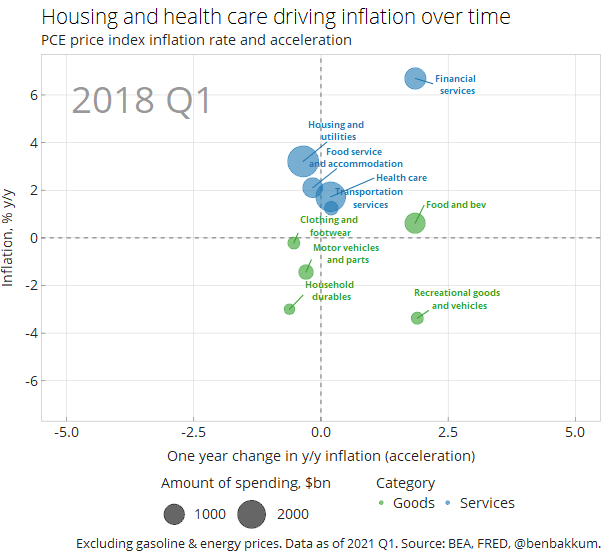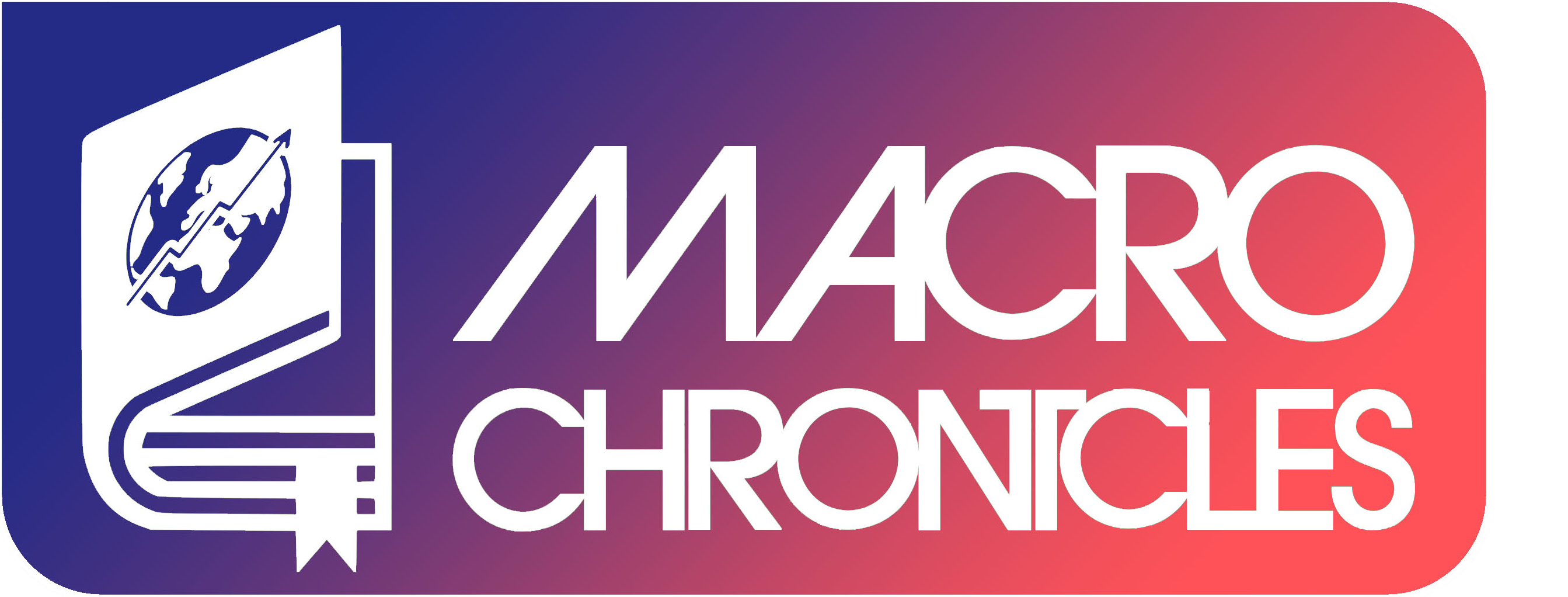I wrote last month about how base effects would cause year-over-year inflation numbers in the US to appear to rocket higher, and the headline Consumer Price Index (CPI) print of 4.2% for April certainly got everyone’s attention. Not just base effects, however, drove the year-over-year figure that high, with large jumps in certain components such as used cars making historic contributions to the overall index change. We can easily foresee when the base effects will fall off, but knowing to what extent inflation will return to a lower clip when various transitory factors abate (as the Fed assures us) or if it can maintain a high rate on the back of significant fiscal and monetary stimulus (as certain economists, bitcoin boosters, and financial pundits warn), remains uncertain.
In a super complex system like the economy, forecasting variables such as inflation with precision can be a quixotic undertaking in relatively normal conditions, let alone in the wild circumstances shaped by the pandemic. I tend to fade—based I think on good reason—the calls made with complete conviction that a bout of soaring inflation will soon overtake us, but I think the most intellectually honest view involves acknowledging that inflation could very well stay high for longer than expected. I would argue that no one really knows for sure. I like the title of Emily Stewart’s recent piece at Vox, The Black Box Economy, as a name for the current state of the world that makes it tough to see what comes next.
As an example of why I think inflation will prove particularly unpredictable, a look under the hood of the consumer price index shows a striking increase in the dispersion of its various component indices around the shutdowns last year and the reopenings now. This means that whereas price changes for different things like bread, men’s sweaters, car tires, and veterinary services tended to maintain a fairly consistent distribution pre-pandemic, now the changes in components are veering off from each other in direction and magnitude.
In the chart below, I take 180 non-overlapping components of CPI and show the distribution of their year-over-year changes over time, with monthly data from the last 3.5 years. The secular trends of many goods’ prices falling with services’ prices generally rising becomes clear, but the periods of early 2020 and early 2021 stand out for the amount of components shifting out to both tails of the distribution. It’s not just used car prices going haywire. To have confidence in the trajectory of the overall index, when so many of the things underlying it are behaving erratically even relative to one another, may not be the most sensible position.

Naturally base effects also play a role in the increased dispersion of the year-over-year data making up the distribution above. The chart below is the equivalent for month-over-month price changes, and it still shows a significant rise in dispersion in recent months amidst reopening.

Switching over to Personal Consumption Expenditure (PCE) price index data allows me to show which broader categories Americans spend the most on in the context of where inflation can be seen accelerating. The larger the bubble in the chart below, the bigger that sector’s contribution to the overall economy. Bubbles in the top right quadrant have higher year-over-year inflation that has accelerated over the past year, while bubbles in the bottom left quadrant have deflation and acceleration to the downside over the past year.

This graphic shows that much of the acceleration in major categories of inflation in early 2021 has been concentrated in goods, which typically trail services inflation or even hover below the zero line. I think this dovetails with Matthew C. Klein’s recent argument in Barron’s that current upswings are associated with reopening and that we can expect these goods categories to fall back to lower levels—in line with longer-term trends shaped by structural forces—as bottlenecks are resolved, businesses are able to plan for demand without facing lockdowns, and supply comes back online.
For policymakers and investors focused on the outlook for sustained increases in inflation, housing and health care prices should garner the most attention. As made clear by the chart above, these sectors make up an incredibly significant share of the economy and consistently experience relatively high levels of inflation even pre-pandemic. They also happen to be areas that are quite sensitive to policy.
Theory also suggests uncertainty
To the broader point of the difficulty in knowing inflation’s path going forward, I thought a February discussion between economists David Beckworth and Ricardo Reis on an episode of Macro Musings had a great rundown of other reasons uncertainty has grown. Reis briefly comments on four separate theoretical frameworks for understanding inflation that in his view point to a wide range of possible outcomes.
From a monetarist perspective, naturally a large increase in the size of the Fed’s balance sheet would seem to spur inflation, but if consumers deposit their savings and Fed asset purchases do not spill out into the real economy in a big way, then inflation would likely remain muted. Through the lens of the Phillips curve, the large amount of slack in the labor market judging from the unemployment and labor force participation rates would indicate that inflation would face downward pressure, but if the economy quickly shoots above potential, that could support price growth. Based on fiscal theories, the large increase in government debt would typically lead to expectations of inflation, yet with rates so low, inflating away the debt becomes much less of a necessity. Finally, with interest rates near the lower bound but there also being fiscal constraints on how high they might rise, then inflation can begin to head sharply to the upside or downside without much room for rates to respond.
Taken together, Reis concludes that this current period entails more uncertainty for the inflation outlook than most others. Risks exist to the downside and upside, and the significant dispersion of prices across various goods and services shown above indicate that’s likely true for CPI and PCE price index components, not just the overall indices themselves.





